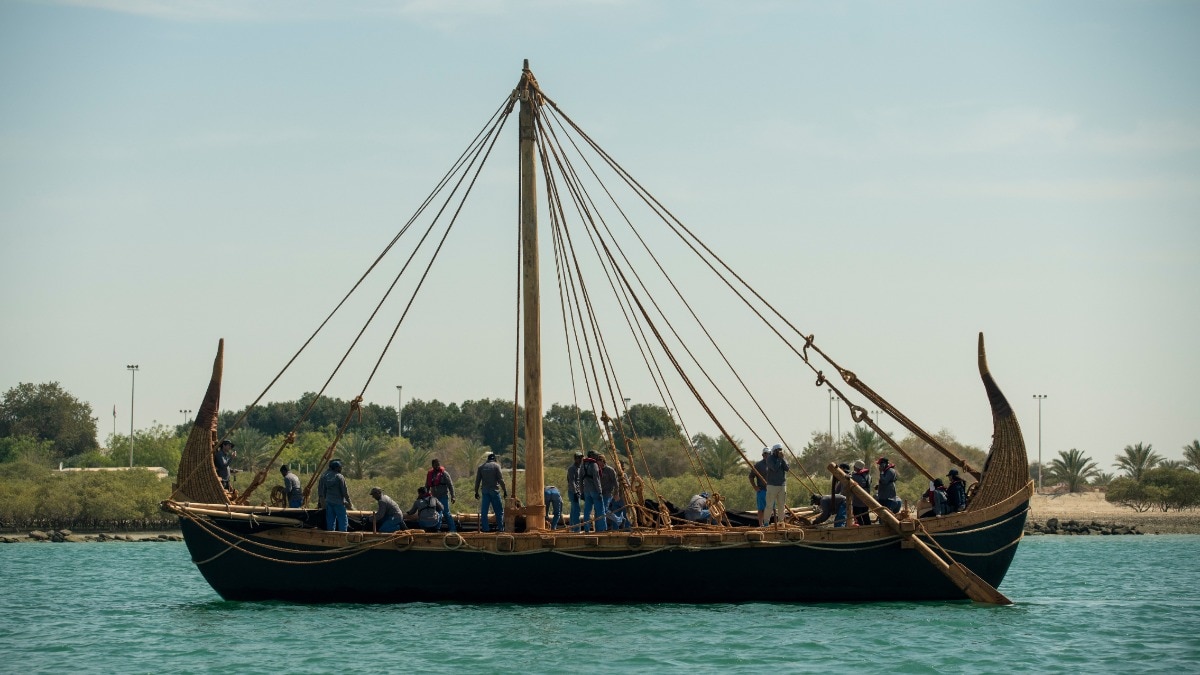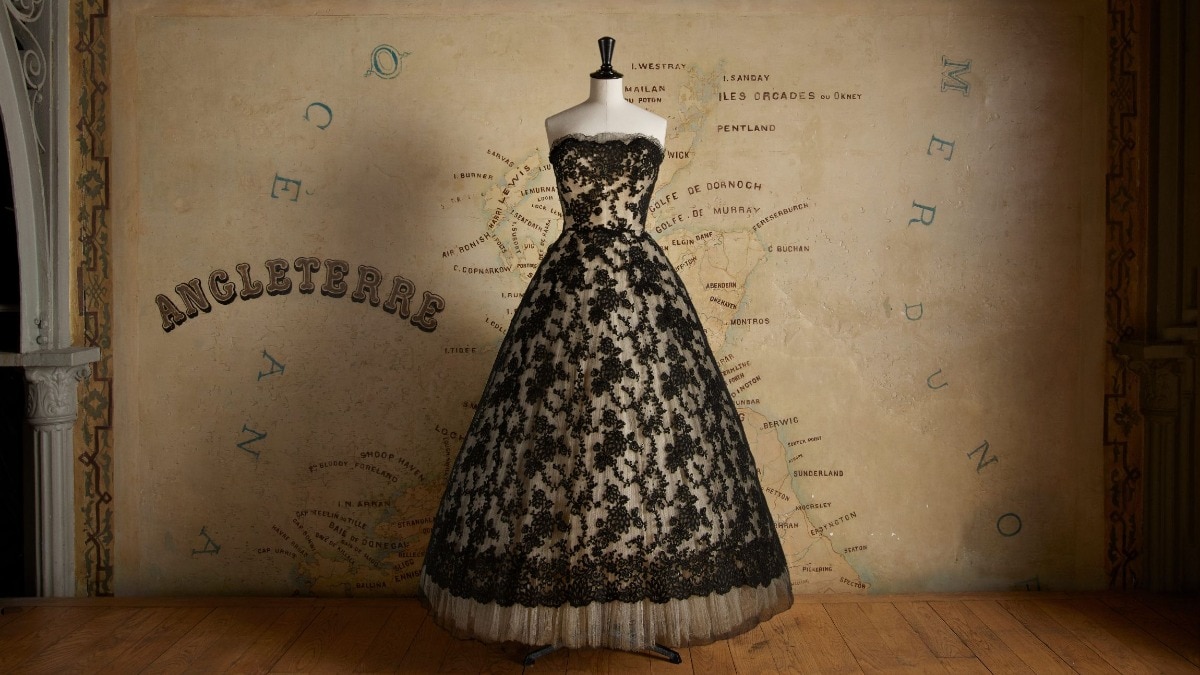
Why you must travel to see this luxury boat from the Bronze Age
An addition to the historic repertoire in Zayed National Museum, the world's largest Magan Boat begins its first voyage.


Whether you're a history buff or not, wouldn't you want to know how traditional craftsmen from the Bronze Age lived and fostered relations with the world outside? It sure piques our recent. Who knew they had international relations in the Bronze Age! And a recent project aims to uncover just that, in this case the maritime heritage of the UAE. Making history from history itself, the Zayed National Museum and its namesake university along with New York University Abu Dhabi (NYU Abu Dhabi), have together created the world’s largest reconstruction of a Magan Boat from the Bronze Age.
“Appreciating the maritime history of the Arabian Gulf is key to understanding trade and cultural connections in the wider ancient world, which is an important focus for Zayed National Museum,” said Mohamed Khalifa Al Mubarak, Chairman of the Department of Culture and Tourism of Abu Dhabi.

The 18-metre-long reconstructed vessel sailed off on its maiden voyage along the coast of Abu Dhabi, attesting to a landmark milestone in the research program. This ship, a testament to historical ingenuity, will be displayed at the Zayed National Museum, the new national museum of the United Arab Emirates, currently under construction on Saadiyat Island. The boat is an appendage to history itself owing to its authentic reconstruction using only materials and techniques that date back to 2100 BCE, so much so that it does not consist of any nails, screws or metals in any kind, but just reeds, ropes and wood.

Covering a distance of 50 nautical miles (92.6km) in the Arabian Gulf part of its rigorous testing, the ship sailed at the speed of up to 5.6 knots under the co-captainship of Emirati sailor Marwan Abdullah Al-Marzouqi. Brought to life from the ancient illustration of similar vessels, the boat boasts a capacity of 120 Gur (36 tons), weighs 19 tons without crew and cargo, features a 127 kg sail made of goat hair, and requires more than 20 people for its launch, adhering to ancient traditions where pulleys did not exist. “From ancient shipbuilders to today’s archaeologists, the launch of this impressive Magan boat reconstruction represents thousands of years of Emirati invention and exploration,” said Mohamed.

From the outer hull of the ship is made from 15 tons of locally sourced reeds—soaked, stripped, crushed, and tied together using date palm fibre—to using bitumen coating, an ancient waterproofing technique, this reconstruction is being lionised for its strict use of raw materials and traditional hand tools. The ships foundational elements also include palm fibre, leather, palm leaf matting, sesame oil, animal fat and goat hair, amongst others.

Shipwrights from Kerala, India were amongst the total of twenty specialists and researchers, who were hailed together from five countries including the USA, UK, and Italy, who were revered for utilising their expertise for rebirthing history to life. This endeavour stands at the pinnacle of several disciplines, including archaeology, anthropology, digital humanities, engineering, and science—a testament to innovation being a uniting force indeed.
“It has been a long and exciting journey from discovering ancient fragments of Magan boats on the island of Umm an-Nar to the iconic moment the boat’s goat hair sail was raised and she set sail from the coast of Abu Dhabi, traversing the same route these monumental vessels would have travelled 4,000 years ago towards the open sea and the coastline of India," said Dr Peter Magee, Director of Zayed National Museum.

This boat is based on a vessel from the Umm an-Nar period, a Bronze Age culture that existed around 2600-2000 BCE in the area of the modern-day United Arab Emirates and Northern Oman. The namesake port, located off the coast of Abu Dhabi city, was once one of the region’s largest ancient ports. Emblematic of the rich history of Magan, which laid the foundation of the country of UAE, this experimental archaeology initiative, launched in 2001, will be on display for visitation once the museum opens up. Promulgating development, promotion and coordination of archaeological and heritage research, this project offers a culmination of the long history and culture from the ancient past to the modern present.
“Navigating the Magan Boat was a journey through time. It made me realise the incredible advancements we’ve made in seafaring,” said Captain Abdallah Alremaithi in a statement. “I can't wait to share this experience with my kids at the museum and tell them I was part of the team that brought history back to life.”
Another researcher on the project, Ayesha Almansoori, shared, “The most poignant moment came when the ship docked after its final voyage. Emotions ran high as we realised the magnitude of this unique experience coming to an end. It was a quiet, reflective moment for all of us. I will always remember being fortunate enough to be one of only five women given the opportunity to sail on the ship.”
Feature image credit: Magan Boat during the sea trials off the coast of Abu Dhabi. Photo by Emily Harris © Zayed National Museum
Also read: HOFA London to play host to the largest all-women exhibit ever
Also read: 12 Indian artists who will steal the spotlight at the ongoing Venice Art Biennale










